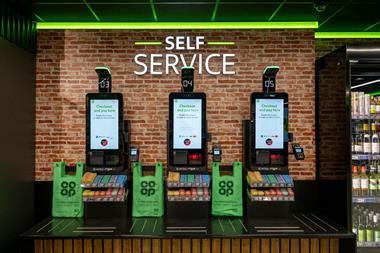A virtual fitting room brings the benefits of the physical fitting room to the online store, boosting profitability by improving conversion rates and reducing garment returns.
A virtual fitting room brings the benefits of the physical fitting room to the online store, boosting profitability by improving conversion rates and reducing garment returns.
Robots, internet, finding clothes that fit… no, not a summary of the opening scenes of ‘Terminator’, but a few of the things that make up our world here at Fits.me.
For the past three years we have been hard at work transforming advanced robotic research from no less than four European universities – in Italy, Germany and two from Estonia – into a ground-breaking business solution that enables clothing retailers to benefit, online, from the many properties of the traditional, bricks-and-mortar fitting room.
Fitting rooms have existed for well over a century, and the concept has endured because it is a remarkably successful sales tool: customers that try on clothes in physical fitting rooms have a conversion rate of 67%, while customers that don’t use a fitting room have only a 10% conversion rate. As clothing sales move online – and they are rising quickly, albeit from a low base of 12% currently – it’s somewhat obvious that what the online clothing retailer needs is a customer-friendly, retailer-friendly virtual fitting room. How otherwise, with sizes varying so dramatically from brand to brand and retailer to retailer, will shoppers overcome the problem of being able to check clothes for fit, so giving them the confidence to buy?
That is what we’ve nailed at Fits.me. We’ve applied science to boost retailer profitability by enabling their customers to overcome the fit problem, increasing conversions and decreasing returns. Dressed in key garments in each available size supplied by the retailer or brand, our sophisticated robotic ‘FitBots’ are photographed at high speed in thousands of permutations of body shape. On our retailer client e-commerce sites, we then display the key garment pictures that correspond to any shopper’s exact body size and shape with just a few basic measurements given by the shopper. This takes all of the guesswork out of whether a particular item fits, or doesn’t fit; is a tight fit or a loose fit; or is long in the arm or short in the arm, and so on. Goodbye, traditional sizing chart.In posts to come we will examine in more detail the mechanics of conversions and returns, and their effects on the online fashion retailer. But the bottom line for our current customers is this: we have evidence of conversion rates improved by 57%, and garment returns down by up to 35%. Think about how that might affect the performance of an online retailer with a typical conversion rate of 1.5-2.5%% and an industry-average returns rate of 25%.


























No comments yet